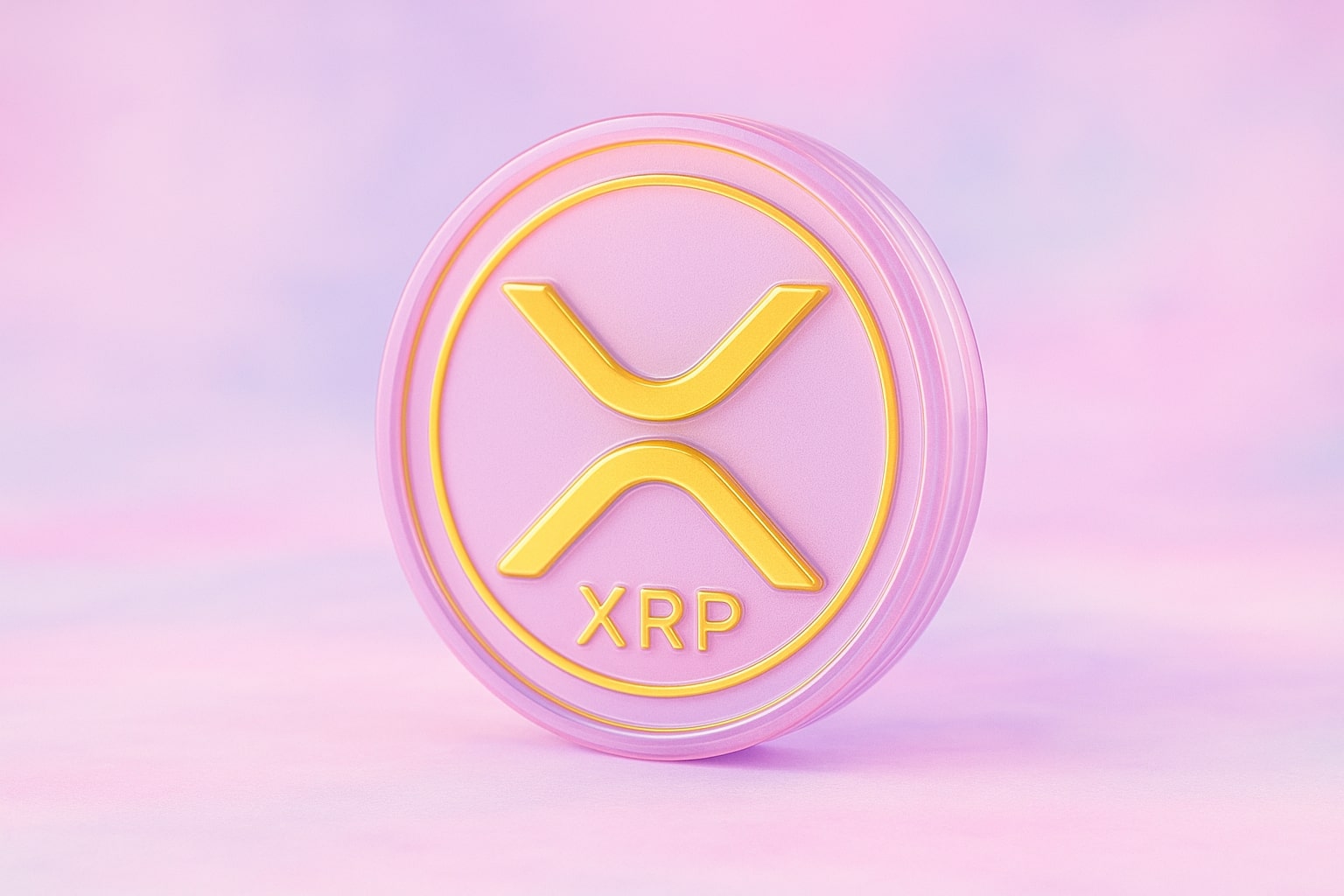
Solana Price Forecast - SOL-USD Consolidates at $185 as ETF Inflows Hit $417M and Traders Watch $210 Resistance
Solana’s 83% drop in outflows and record ETF accumulation hint at long-term confidence, but technical weakness and muted spot buying keep SOL capped under $210 | That's TradingNEWS
Solana (SOL-USD) Holds $185 as Institutional Inflows Rise but Momentum Weakens Near $210 Resistance
Solana (SOL-USD) currently trades around $185.47, slipping 0.75% in the last 24 hours, as the asset remains trapped between $180 support and $210 resistance, marking one of the most pivotal price zones of 2025. Despite a sharp 19% monthly drawdown, Solana continues to hold the lower boundary of its ascending trendline, a critical line that has sustained the broader uptrend since early 2025. However, while retail sentiment leans cautiously bullish, large traders have yet to return decisively — and the next move depends heavily on whether institutional inflows and ETF demand can reignite the rally.
Outflows Drop 83% as Long-Term Holders Stop Selling
Recent on-chain data highlights a significant improvement in investor behavior. Solana’s Holder Net Position Change, which measures the balance between accumulation and distribution, improved from –11.43 million SOL on October 3 to just –1.91 million SOL by October 31, an 83% reduction in outflows. This sharp contraction signals that while holders are still trimming exposure, the selling pace has slowed substantially. This pattern often precedes stabilization phases, especially when accompanied by price resilience above major support levels — in this case, $178.
The cooling of selling pressure reflects a maturing investor base rather than panic exits. Despite short-term bearish tones, the structural trend points toward early reaccumulation. Glassnode data shows smaller retail addresses have increased their balances, even as whale wallets paused fresh accumulation.
Chaikin Money Flow Remains Negative as Big Money Waits for Confirmation
One of the clearest indicators of institutional sentiment, the Chaikin Money Flow (CMF), remains below zero despite the launch of the Bitwise Solana Staking ETF (BSOL). Between October 27 and October 31, CMF briefly attempted to cross into positive territory before falling back into negative, confirming that large investors are not yet redeploying substantial capital into Solana (SOL-USD).
The BSOL ETF, launched last week, drew $132 million in inflows, but analysts note that most of this capital represents in-kind creation from existing SOL reserves, meaning it doesn’t necessarily reflect spot-market buying. In simpler terms, ETF inflows have not yet translated into new demand pressure on open exchanges. As long as CMF remains below zero, the upside potential for SOL will remain capped near $198–$209.
Price Structure: Rising Wedge Threatens Breakdown
Technically, Solana’s daily chart forms a broadening rising wedge, a formation typically signaling exhaustion after extended rallies. The lower trendline has been tested five times since August, and each bounce has shown progressively weaker volume. Between October 13 and October 26, the asset printed a lower high in price while the Relative Strength Index (RSI) made a higher high, creating a hidden bearish divergence — often a precursor to downward continuation.
For SOL to reverse this setup, it must first regain $198 and sustain a close above $209, a zone that coincides with its short-term moving average cluster. A clean break above that would open a technical path toward $237, representing a potential 27% advance from current levels. Failure to defend $178, however, could invite a slide toward $155, translating into a 14% downside extension — a move that would reinforce bearish momentum into mid-November.
ETF and Institutional Flows Reinforce Long-Term Confidence
Despite short-term technical weakness, institutional activity provides a stabilizing foundation. Combined ETF inflows into Solana-related products reached $417 million by early November, according to data compiled by analyst Jesse Peralta, a figure that continues to climb. These inflows have been instrumental in absorbing retail selling pressure, providing liquidity support and helping maintain the asset above $180 even during broad crypto market corrections.
This accumulation from ETFs mirrors the early accumulation cycles seen in Bitcoin ETFs during 2023. Should the same liquidity trend continue, Solana’s ETF channel could evolve into a powerful demand funnel for passive capital — particularly as staking yields remain above 7% and validator participation expands.
SOL/BTC Pair Exposes Relative Weakness Against Bitcoin
The SOL/BTC trading pair highlights clear underperformance, currently retesting the 0.001670 BTC support area. The ratio has consistently failed to break through upper resistance, confirming weaker relative strength compared to Bitcoin (BTC-USD). This signals reduced rotation from institutional Bitcoin holders into altcoins — an important gauge for liquidity flow across the crypto spectrum.
Analyst Crypto Chiefs notes that unless the SOL/BTC pair prints a higher low or develops bullish divergence on oscillators, the lag could persist. A decisive break below 0.001670 BTC would likely extend Solana’s underperformance for several sessions, dampening enthusiasm among fund managers rotating between top-cap cryptos.
Read More
-
Vanguard S&P 500 VOO ETF (NYSEARCA:VOO) Hits $627.04 as Earnings Push Markets Higher
02.11.2025 · TradingNEWS ArchiveStocks
-
XRP ETFs Ignite: XRPR at $21.02 and XRPI at $15.08 as Bitwise and Canary Drive $10B ETF Momentum
02.11.2025 · TradingNEWS ArchiveCrypto
-
Natural Gas Price (NG=F) Rises to $3.85 as Tight U.S. Supply and Global LNG Boom Reshape Market Outlook
02.11.2025 · TradingNEWS ArchiveCommodities
-
USD/JPY Price Forecast - USDJPY=X Nears 155.00 as Japan’s Weak Yen Collide
02.11.2025 · TradingNEWS ArchiveForex
Accumulation Signals Hint at Possible Rebound Pattern
According to market strategist Osmy_CryptoT, Solana’s price rhythm between $185 and $190 resembles prior accumulation structures seen before its previous 20% rallies earlier in 2025. Diminishing sell volume and flattening RSI levels indicate reduced downside momentum, while the 4-hour chart shows symmetrical consolidation — often a prelude to expansion.
The pattern suggests a reaccumulation phase may already be forming. If buying volume returns alongside a CMF shift above zero, Solana could reclaim the $200 mark, triggering a secondary impulse toward $230–$250, aligning with prior breakout zones.
Ecosystem Strength and DeFi Expansion
Beyond price, Solana’s fundamentals remain robust. The network continues to lead in transaction throughput, averaging over 65 million daily transactions, with average fees below $0.0005 — a structural edge over other Layer 1 competitors. Solana’s DeFi total value locked (TVL) sits above $9.1 billion, up 12% month-over-month, supported by lending protocols like MarginFi and decentralized exchanges such as Jupiter.
NFT activity has also rebounded, with Solana accounting for 15.6% of all NFT trading volume in October, surpassing Polygon and Cardano combined. These ecosystem statistics reveal that on-chain participation remains high even as speculative interest cools.
Macro and Regulatory Landscape
Macroeconomic pressure has contributed to Solana’s volatility. Rising U.S. Treasury yields and the Fed’s cautious stance toward further rate cuts have constrained liquidity across risk assets. Nonetheless, the U.S. SEC’s approval of Solana-based ETF products marks a milestone, providing institutional legitimacy that could support long-term valuation. Meanwhile, regulatory clarity in Singapore, the UAE, and Hong Kong has further increased access to Solana staking and derivatives trading.
New Competitors and Layer-1 Challenges
Competition within the Layer-1 ecosystem continues to tighten. Networks like Aptos (APT) and Sui (SUI) now offer comparable transaction speeds and are targeting enterprise-grade adoption. However, Solana still holds the upper hand in developer retention and active daily wallet count — both essential indicators of network stickiness.
Still, investors must weigh the implications of these rivals. The increasing number of high-speed Layer-1 blockchains creates a dilution effect on capital inflows, which could explain Solana’s failure to reclaim its $200 zone despite bullish macro inflows elsewhere in the crypto market.
Remittix (RTX) and AlphaPepe (ALPE) Compete for Investor Attention
Emerging projects like Remittix (RTX) and AlphaPepe (ALPE) have started drawing speculative capital away from Solana. Remittix, with over 40,000 active holders and $27.7 million raised, targets cross-border payments and fiat conversion, bridging the gap between crypto and traditional banking rails. Meanwhile, AlphaPepe (ALPE), trading near $0.00722, combines meme-driven virality with audited staking mechanics — a model appealing to high-risk traders seeking early-stage multiples.
This migration of speculative capital toward newer tokens partially explains Solana’s muted momentum despite fundamental health. While SOL continues to attract institutional liquidity, retail traders are increasingly chasing presale opportunities with higher short-term payoff potential.
Critical Support and Resistance Zones for SOL-USD
As of now, the $178–$180 zone forms the key support floor. A breakdown below this range could trigger liquidations toward $155, while a clean recovery above $198–$209 would reset bullish momentum. The broader ascending trendline from early 2025 remains intact, but the wedge pattern suggests a test of both extremes before the next directional move.
If bulls manage to reclaim $210 as new support, Solana could target $240–$260 within weeks, with a possible extension to $280–$300 if ETF inflows accelerate. Conversely, sustained weakness below $180 may expose the asset to a prolonged consolidation phase lasting through mid-November.
Institutional Strategy and Market Position
Institutional accumulation, reflected in ETF flows and staking participation, continues to offset retail selling. Long-term investors are betting on Solana’s infrastructure dominance and low transaction costs, treating current consolidation as a strategic entry zone rather than an exit point. Analysts from several major funds expect Solana’s market capitalization to retest $90–$100 billion by mid-2026 if network expansion continues.
At the same time, Solana’s role in real-world assets (RWAs) tokenization and payment integration remains underutilized — representing untapped upside potential. Should regulatory approval for tokenized securities and payments on Solana progress, the network could see a new inflow wave from fintech platforms by next year.
Verdict: Solana (SOL-USD) — A Cautious Buy Amid Technical Weakness
Solana (SOL-USD) sits at a defining juncture. The 83% reduction in holder outflows, $417 million ETF inflows, and steady ecosystem growth present a strong long-term backdrop. Yet, negative CMF, rising wedge structure, and weak SOL/BTC ratio suggest near-term caution.
Given the mix of accumulating fundamentals and fragile technicals, Solana (SOL-USD) is rated a Cautious Buy, with key validation points at $198 and $210. A confirmed breakout above those levels would signal the next leg toward $240–$260, while failure to defend $178 could push the price back to $155–$160.
The market’s next move hinges on whether institutional demand can overpower short-term selling. For now, Solana holds the critical $185 zone — a balance point between correction and renewed expansion.

















